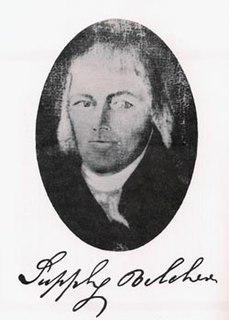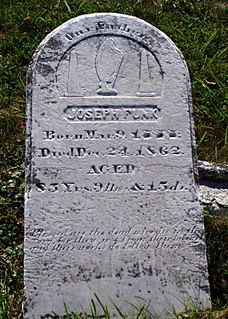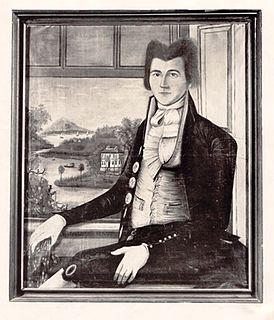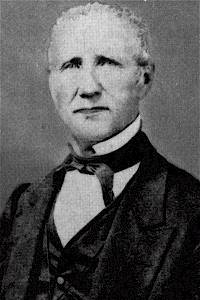 W
WShape notes are a musical notation designed to facilitate congregational and social singing. The notation, introduced in late 18th century England, became a popular teaching device in American singing schools. Shapes were added to the noteheads in written music to help singers find pitches within major and minor scales without the use of more complex information found in key signatures on the staff.
 W
WSupply Belcher was an American composer, singer, and compiler of tune books. He was one of the so-called Yankee tunesmiths or First New England School, a group of mostly self-taught composers who created sacred vocal music for local choirs. He was active first in Lexington, Massachusetts, then eventually moved to Farmington, Maine. Like most of his colleagues, Belcher could not make music his main occupation, and worked as tax assessor, schoolmaster, town clerk, and so on; nevertheless he was considerably well known for his musical activities, and even dubbed 'the Handell [sic] of Maine' by a local newspaper. Most of his works survive in The Harmony of Maine, a collection Belcher published himself in Boston in 1794.
 W
WWilliam Billings is regarded as the first American choral composer, and leading member of the First New England School.
 W
WAnanias Davisson was a singing school teacher, printer and compiler of shape note tunebooks. He is best known for his 1816 compilation Kentucky Harmony, which is the first Southern shape-note tunebook. According to musicologist George Pullen Jackson, Davisson's compilations are "pioneer repositories of a sort of song that the rural South really liked."
 W
WSeaborn McDaniel Denson was a notable Alabama musician and singing school teacher within the Sacred Harp tradition. He was a son of The Rev. Levi Phillips Denson, a Methodist minister, and Julia Ann Jones Denson. Seaborn Denson was born April 9, 1854 in Arbacoochee, Alabama. He married Sidney Burdette.
 W
WMatilda T. Durham, later Hoy was an American composer and hymn writer. She is remembered for her shape note tune "Promised Land", first published in 1835.
 W
WJoseph Funk (1778–1862) was a pioneer American music teacher, publisher, and an early American composer. He invented a shape note system in 1851 for the Harmonia Sacra.
 W
WThe Hesperian Harp is a shape note tunebook published in 1848 by Dr William Hauser, with reprintings issued in 1852, 1853, and 1874. Subtitled A Collection of Psalm and Hymn Tunes, Odes and Anthems, it is named after Hauser's plantation, Hesperia, in Jefferson County, Georgia. The word "harp" is often found in the titles of such tunebooks, most famously The Sacred Harp. The Hesperian Harp was probably the largest shape note tune book of its day, containing 552 pages of music, including 36 songs composed by Hauser. It uses the four-note system of notation pioneered by William Little and William Smith.
 W
WAndrew Law (1749–1821) was an American composer, preacher and singing teacher. He was born in Milford, Connecticut. Law wrote mostly simple hymn tunes and arranged tunes of other composers. In 1781, he was granted the first authorial copyright in the United States, though there is some debate about which work the grant applied to. His works include Select Harmony (1778), a Collection of Best Tunes and Anthems (1779), and The Art of Singing in Three Parts (1792-96). He was among the first American composers to put the melody in the soprano instead of the tenor part, and was also one of the first Americans to write about music. Andrew Law was a pioneer of the FASOLA system of musical notation which simplified lessons in reading music during the Singing School era of New England music. FASOLA singing is also known as "Shape Note Singing". He published Essays on Music in 1814. Andrew Law died in 1821.
 W
WSacred Harp singing is a tradition of sacred choral music that originated in New England and was later perpetuated and carried on in the American South of the United States. The name is derived from The Sacred Harp, a ubiquitous and historically important tunebook printed in shape notes. The work was first published in 1844 and has reappeared in multiple editions ever since. Sacred Harp music represents one branch of an older tradition of American music that developed over the period 1770 to 1820 from roots in New England, with a significant, related development under the influence of "revival" services around the 1840s. This music was included in, and became profoundly associated with, books using the shape note style of notation popular in America in the 18th and early 19th centuries.
 W
WThe Shenandoah Harmony is a 2013 republication of the works of Ananias Davisson (1780–1857) and other composers of his era, in the format used by modern shape note singing groups. Although a number of new shape note tune books were compiled and published in the two decades leading up to the publication of the Shenandoah Harmony, this volume is notable as "the largest new four-shape tunebook published for more than 150 years." The importance of the Shenandoah Valley for the emergence of a distinctive Southern shape-note singing tradition has been noted by many musicologists. Authentic South reporter Kelley Libby of WFAE, attending an all-day singing in Cross Keys, felt "transported to the Shenandoah Valley of the 1800s."
 W
WThe Southern Harmony, and Musical Companion is a shape note hymn and tune book compiled by William Walker, first published in 1835. The book is notable for having originated or popularized several hymn tunes found in modern hymnals and shape note collections like The Sacred Harp.
 W
WTimothy Swan (1758–1842) was a Yankee tunesmith and hatmaker born in Worcester, Massachusetts, USA. The son of goldsmith William Swan, Swan lived in small towns along the Connecticut River in Connecticut and Massachusetts for most of his life. Swan's compositional output consisted mostly of psalm and hymn settings, referred to as psalmody. These tunes and settings were produced for choirs and singing schools located in Congregationalist communities of New England. Swan is unique as an early American composer in that he composed secular vocal duets and songs in addition to sacred tunebook music. The tunebook, New England Harmony is a collection of his sacred music compositions, while The Songster's Assistant is a collection of his secular music. Swan was also a poet and teacher of singing.
 W
WCharles Davis Tillman —also known as Charlie D. Tillman, Charles Tillman, Charlie Tillman, and C. D. Tillman—was a popularizer of the gospel song. He had a knack for adopting material from eclectic sources and flowing it into the mix now known as southern gospel, becoming one of the formative influences on that genre.
 W
WBenjamin Carl Unseld, better known as B. C. Unseld, was a gospel music teacher, composer, and publisher.
 W
WWilliam Walker was an American Baptist song leader, shape note "singing master", and compiler of four shape note tunebooks, most notable of which are the influential The Southern Harmony and the Christian Harmony, which has been in continuous use.
 W
W"Watchman" is an American Christian hymn, published in 1845 in The Southern and Western pocket harmonist.
 W
W"What Wondrous Love Is This" is a Christian folk hymn, sometimes described as a "white spiritual", from the American South. Its text was first published in 1811, during the Second Great Awakening, and its melody derived from a popular English ballad. Today it is a widely known hymn included in hymnals of many Christian denominations.
 W
WBenjamin Franklin White was a shape note "singing master", and compiler of the shape note tunebook known as The Sacred Harp. He was born near Cross Keys in Union County, South Carolina, the twelfth child of Robert and Mildred White.